Let’s dive into the world of the American Foxhound colors!
Are you looking for a hound-breed dog that will suit your active lifestyle? Then the American Foxhound dog might be the right pooch for you!
These large dogs have been registered as a breed in the United States since the late 19th century but have yet to gain the popularity of some other hound dogs. This only makes them more unique and special!
The American Foxhounds are known for their high energy requirements, long legs, floppy ears, and a short coat of tricolor. But this breed is more colorful than might appear at first glance.
Here is everything you need to know about the wonderful world of the American Foxhound’s colors and markings:
Standard Coat Colors
Some coat colors are considered a breed standard. This means that the dogs that come in these coat colors can participate in dog competitions and conformation shows.
Many other colors can be recognized by local kennel clubs, but they are considered faulty and not a part of a standard.
This doesn’t necessarily mean that there’s anything wrong with the dog that comes in colors that aren’t standard. However, if you want your dog to be a champion, you need to stick to the colors your local kennel club considers desirable.
In the US, the leading kennel club is the American Kennel Club (AKC). According to its regulations, here are the only two American Foxhound colors that are up to the breed standard:
1. White, Black, And Tan

Most American Foxhounds you’ll find come in the tricolor white, black, and tan color combination.
They have a white base coat, tan backs, tails, heads, and outer parts of the legs, as well as a black saddle and, sometimes, black necks.
The white is also present on their muzzle and a point to their forehead, as well as on the tip of their tails.
Unlike in many other hound dogs, such as the Beagles, the saddle often appears translucent, as it’s sprinkled with tan hairs.
Black parti markings are also allowed, but the dog’s head should always be tan.
2. Black, White, And Tan

Black, white, and tan American Foxhounds are pretty similar to the white, black, and tan dogs. However, black is more prominent than tan, and tan is usually located only in a few patches on the dog’s face and body.
Did you know that American Foxhound puppies are born white and black, and the tan or red shades only appear once the black fades?
Many novice dog owners end up surprised when they realize that their black, white, and tan pup ended up with much more red than what he was born with!
This is one of the reasons why black, white, and tan pups are rarer than the other tricolor combination.
Non-standard Coat Colors
Next to standard colors, most dog breeds can come in a few other coat shades.
Some of these shades are recognized by the kennel club but are not considered desirable. These colors appear naturally in the dog’s genetics, but for some reason, the AKC or any other breed club doesn’t want them in confirmation shows.
Other colors you might see being advertised by breeders are not even recognized, and this is where the issues start.
When a color is not recognized, it’s usually due to one of these two causes:
- The dog has been crossbred
- The genetics behind the coat colors are connected with some health problems
For example, the solid white coat color in many breeds can be the product of a double merle gene or some health problem such as albinism. Because of this, kennel clubs and experts want to prevent breeders from further spreading the faulty genes, harming the quality of a dog breed.
Some colors might be a sign that a dog isn’t truly purebred. The crossbreeding might’ve occurred several generations ago, but its blood is still not pure, and one of the signs is the rare coat color irresponsible breeders are trying to charge you thousands of dollars for.
For example, if you see a spotted American Foxhound, chances are it has been mixed with some other similar-looking dog, such as a Dalmatian or an American Bluetick Coonhound.
Here are some of the non-standard American Foxhound colors you might see being advertised:
1. White
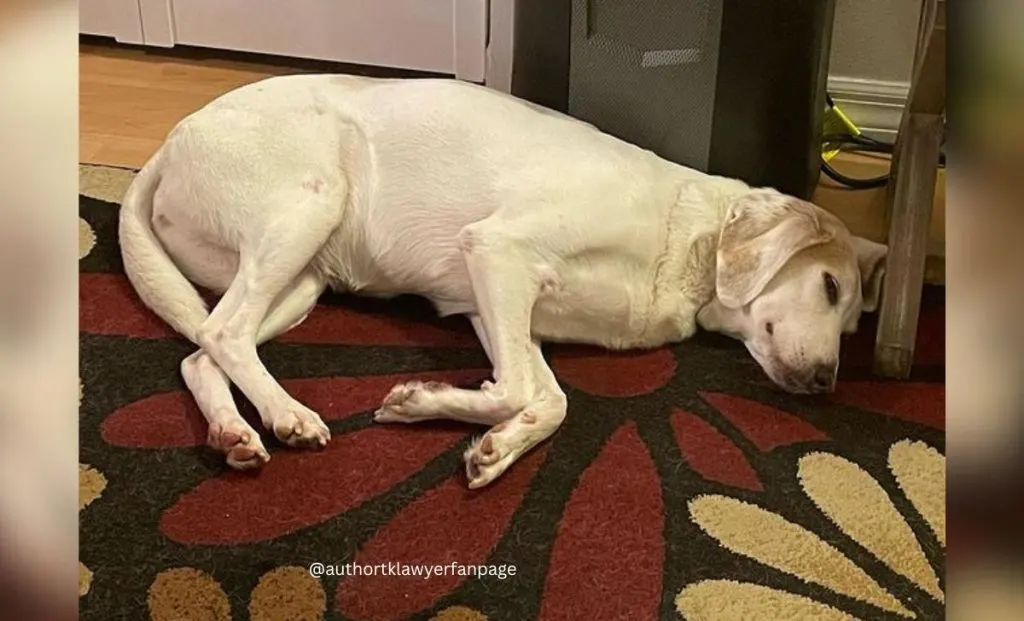
Solid white Hounds are very rare, but they are purebred.
However, as the solid white color in hound dogs has been known to be connected with some health problems, these dogs are not considered a standard.
And no, white American Foxhounds are not dogs with albinism. You can see this just by looking at their noses.
In albino dogs, the nose is pink, and the eyes are blue with a reddish tint. White Foxhounds do have a coat that lacks pigment, but their eyes are still dark brown and their eyes are brown or hazel.
You might also see some darker hairs present on their white coat, something that isn’t possible in dogs with albinism.
2. White And Red

As mentioned before, all American Foxhound puppies are born white and black, and the tan or red markings appear as the black hairs fade at the early age of puppyhood.
If the black disappears entirely, you’ll get a white and red American Foxhound.
While it’s undeniable that these dogs are beautiful, American Foxhounds are known for being tricolor dogs. As such, no bicolor combination is allowed in the breed selection.
3. White And Cream
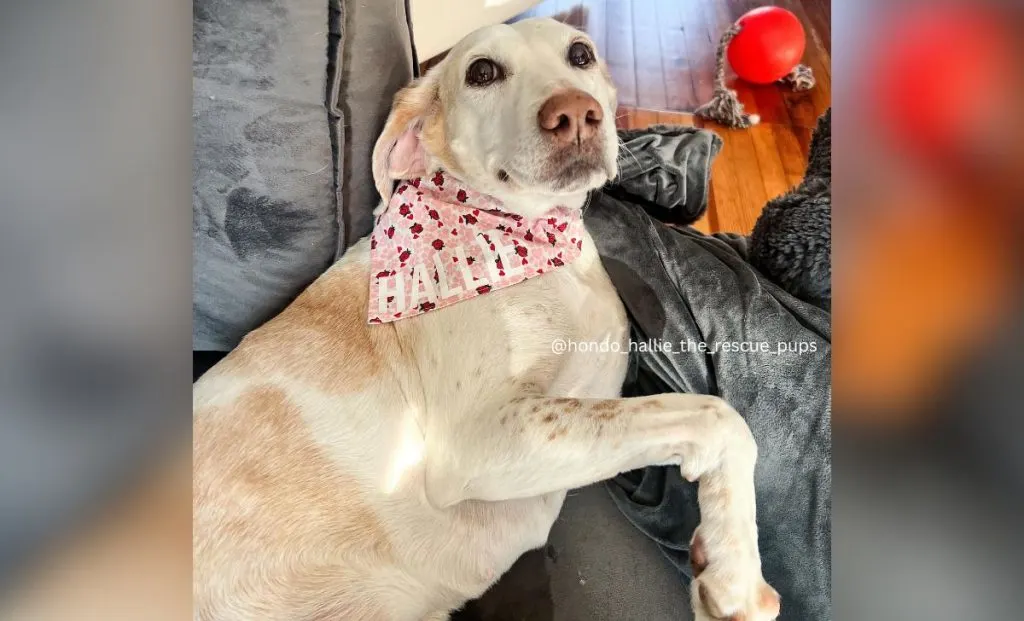
White and cream dogs are similar to white and tan ones, but the tan color is so much lighter that it almost looks white.
The cream color should always have a sandy shade and should never be too yellow or orange. If it is, you’re looking at the lemon American Foxhound color.
4. Black, Brown, And White

This is one of the two tricolor coats that are not allowed in this energetic breed.
In black, brown, and white dogs, the tan color has a dark chocolate or mahogany shade. The red hue is barely present, and the brown is sometimes challenging to distinguish from the black saddle.
As the breed standard requires a clear distinction between the tan and black markings, these pups are not considered desirable, and the presence of brown color is considered a fault.
Not to mention how, although they might look similar, brown and tan colors are caused by different genetics!
5. Blue
Blue dogs are not distinguished just by the color of their coat but by the color of their noses. I’ll explain.
In all dog breeds, from the American Bullies to American Foxhounds, the blue coat is caused by the dilution genes. These genes will dilute any pigment on the dog’s body from black to a dark blueish-gray shade.
This means that any black markings, as well as the dog’s black nose and even eyes, will turn blue.
However, as not all Foxhounds have black present on their coats, sometimes the blue dilution gene can only be seen on their noses and paw pads.
6. Tan
Solid-colored tan American Foxhounds are very rare. Most of these pups have at least some white markings, usually on their face and chest.
Tan American Foxhounds are entirely healthy and purebred. However, once again, as this breed is supposed to be tricolor, solid colors are not allowed.
7. Red

Red American Foxhounds look very similar to tan pups. The only difference is that their coat color has a brighter red shade with a warm hue.
It’s unfortunate that the red color is only recognized but not accepted in the American Foxhound dog breed, as these pups are truly gorgeous looking.
8. Brown, White, And Tan
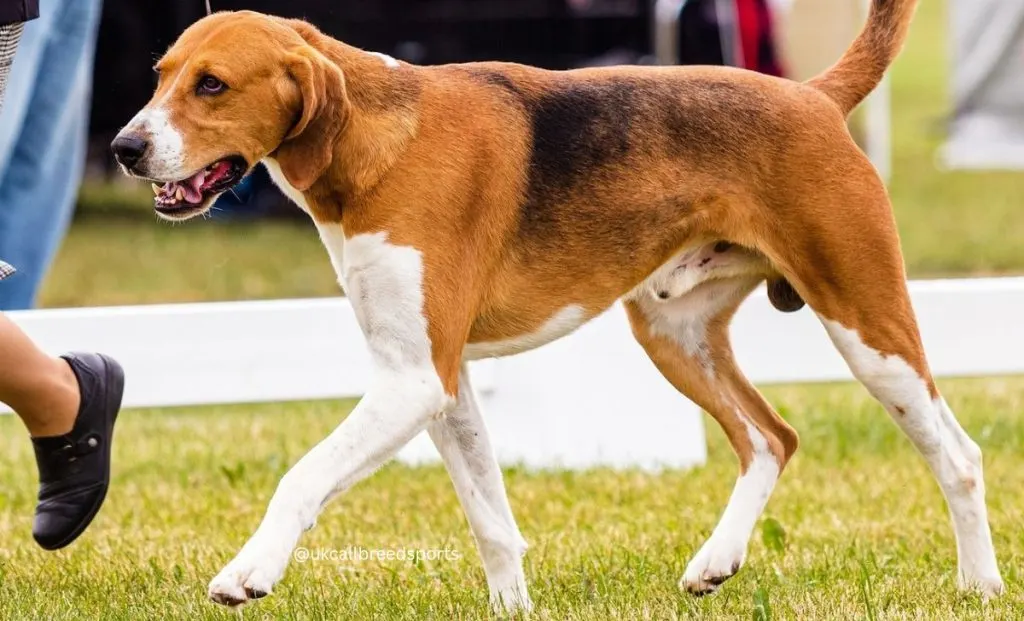
Brown, white, and tan is another tricolor combination not accepted by the AKC. The reason is that it is the product of the dilution gene, just like blue.
In these pups, the dilution gene turns the black into brown. As a result, the American Foxhound will have a white base coat, tan markings, and a brown saddle.
Its nose and paw pads will also be brown, and its eyes will typically be lighter, varying from hazel to even green.
9. Lemon And White
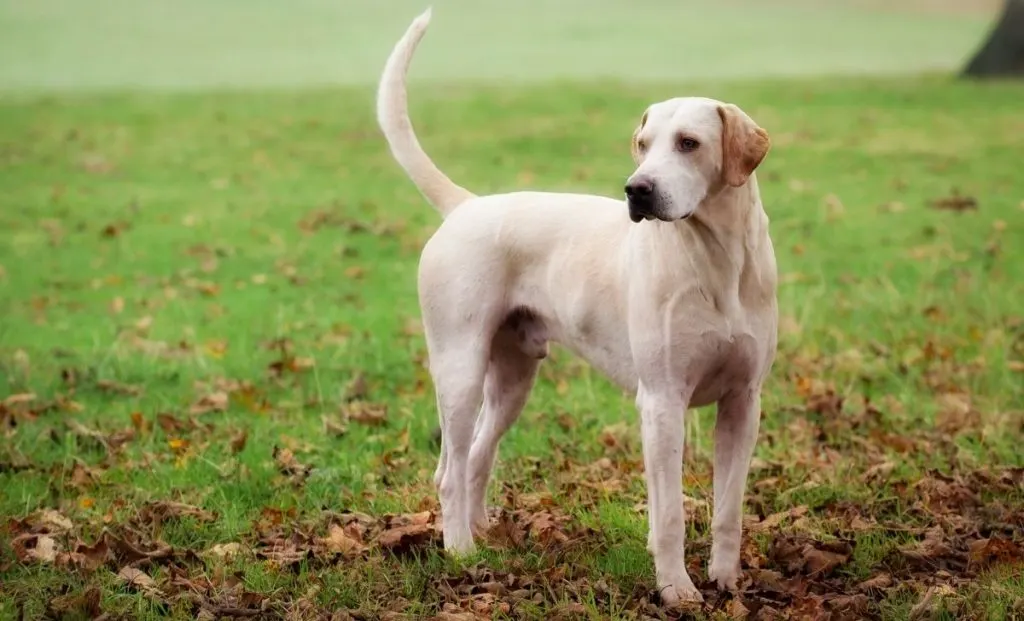
Lemon and white American Foxhounds are bicolored dogs with a white base coat and light cream to ginger markings.
While lemon is a common coat color in many hound breeds, it is not naturally found in American Foxhounds. The presence of a lemon color is an indication that a dog has been crossbred, usually with its cousin, the English Foxhound.
10. Merle
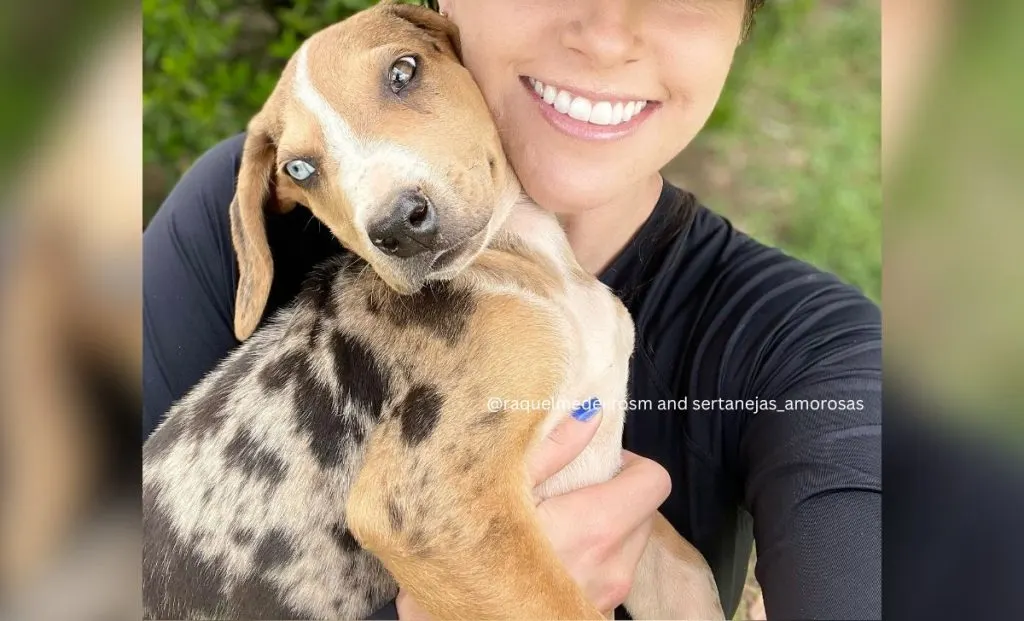
In recent years, I have seen a few breeders selling merle American Foxhound puppies. However, merle is not a pattern that is possible in the American Foxhounds, and these dogs were crossbred, probably with the Australian Shepherd, as merle is one of the most common colors in this breed.
To make matters worse, merle is a very controversial coat color. It is the product of dominant genes, so it’s enough for one dog to have the merle gene for its offspring to likely inherit it. This isn’t the issue, as there is nothing wrong with dogs that have a merle pattern.
The problems arise with double merles, dogs that have inherited a merle gene from both of their parents.
Double merles are white dogs that often have blue eyes or heterochromia. These pups have extremely high chances of having vision or hearing problems, as the merle dilution gene is so strong it affects the pigment in the dog’s ears and eyes.
If you might think that the solution is simply not to breed two merle dogs – things are not that simple. Some pups are cryptic merles, meaning that they carry the gene, but due to their own coat color, the merle pattern isn’t expressed on their coats.
In other words, without extensive DNA testing, you cannot be certain a dog doesn’t carry a merle gene.
And considering that purebred American Foxhounds cannot be merle as it is – it’s best to stay away from this color altogether.
11. Ticked

Ticked American Foxhounds have tiny spots on the black portions of their coat. Ticking can occur in most coat colors, from cream and tan to blue.
However, the gene for ticking pattern is not found in the American Foxhounds. Ticked American Foxhounds are mutts, probably crossbred with the American Bluetick Coonhound or some similar hound breed.
Differences Between Breed Standards
The American Kennel Club (AKC) might be one of the largest kennel clubs in the world, but it is not the only one. Different kennel clubs can have some minor differences in the breed standard that can make things all the more confusing.
We’ll take two other large kennel clubs as an example: The United Kennel Club (UKC) and the Federation Cynologique Internationale (FCI).
According to the AKC, these pups have a short, smooth coat that has to be tricolor for it to be considered up to the standard, but many other colors are accepted.
When it comes to the FCI, the breed standard states that “any recognized hound color” is acceptable and that the dog’s eyes need to be brown or hazel.
UKC, on the other hand, states that the American Foxhounds have a coat of medium length, and the tail has a slight brush. It also states that any coat color is acceptable.
One thing everyone agrees on is that, just like any other American Hound, this is an affectionate breed that will be a great working dog and a good potential companion to most pet owners.
Do Colors Matter?
Finally, after reading all this, you might be wondering: Do American Foxhound colors even matter, and do they affect any aspect of owning these pups?
There are some popular beliefs that certain coat colors affect a dog’s personality. For example, black dogs are thought to be more aggressive, and brown dogs are considered to be sickly.
While, as I’ve mentioned, some colors can be related to an increased chance of certain health issues, a dog’s coat color won’t affect its personality. All American Foxhounds are great pets and hunting dogs, and when it comes to that, all coat colors are equally good.
Just keep in mind that this large and active breed might not be suitable for apartment living. These are sensitive dogs that have high exercise needs and can become destructive and develop behavioral issues without proper obedience training and socialization.
If you’ve got what it takes to be the American Foxhound owner, feel free to choose whichever color you like the best.
Don’t fall for those “rare color” scams some bad breeders might advertise. Otherwise, you are risking getting a crossbreed with an unknown background and temperament, which is never a good thing, especially with large dogs.
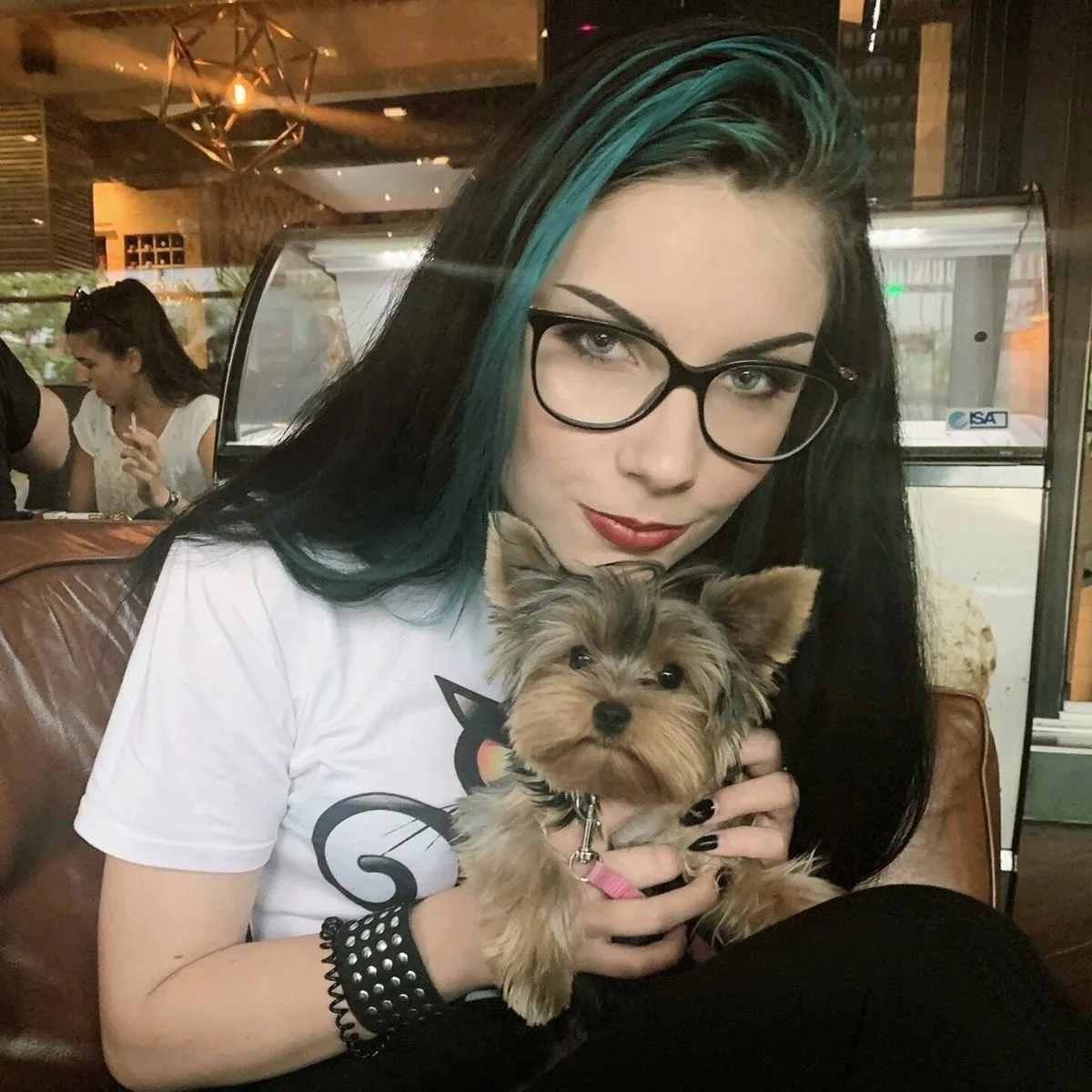
Vanja’s passion for writing started at an early age, which is why she pursued Journalism as her college degree. She can research any topic and find all the information before you bat an eye, which is a great thing for her job but a terrible one for her husband.
Even as a young child, she fell in love with everything fluffy – but dogs have a special place in her heart due to her childhood companion, a Corgie named Archie.
Motivated by her experiences and driven by a desire to give back to her four-legged companions, she spends her free time volunteering at a local dog shelter.
